Bulgarian food is a culinary delight that reflects the country’s rich history and diverse cultural influences. Traditional Bulgarian food is made with fresh, locally sourced ingredients that give them an authentic taste. Bulgarian cuisine features a variety of dishes, including hearty stews, grilled meats, and savoury pastries. The use of herbs and spices such as paprika and parsley is common in Bulgarian cooking, adding to the flavour profile of these dishes.
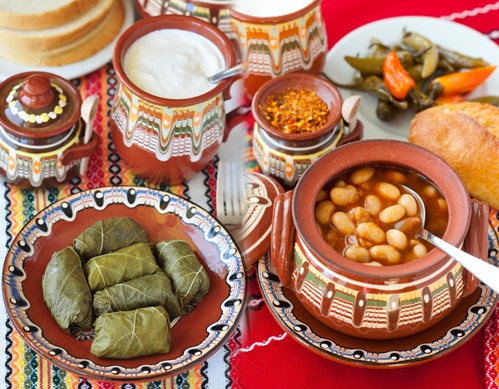
Sharing meals with family and friends is an important part of Bulgarian food culture, making it more than just about the food itself. It’s about coming together to enjoy each other’s company while savouring delicious meals.
One of the most popular Bulgarian foods is banitsa – a savoury pastry made with filo dough filled with cheese or spinach. This dish is often served at breakfast but can also be enjoyed throughout the day as a snack or light meal.
Another famous Bulgarian dish is kavarma – a hearty stew made with pork or chicken cooked in a clay pot with vegetables like peppers and onions. This dish has been around for centuries and has become a staple in many households across Bulgaria.
If you’re looking for something lighter, try shopska salad – a refreshing mix of tomatoes, cucumbers, onions, peppers, and feta cheese dressed with olive oil and vinegar. This salad is perfect for hot summer days when you want something cool to eat.
For meat lovers, kebapche (grilled minced meat) or kyufte (meatballs) are must-try dishes. These grilled meats are usually served with sides like roasted potatoes or rice pilaf.
Bulgarian cuisine also includes soups like tarator – cold yogurt soup flavoured with garlic and dill – which is perfect for hot summer days when you want something light yet flavourful.
Shopska Salad: Traditional Bulgarian Summer Salad
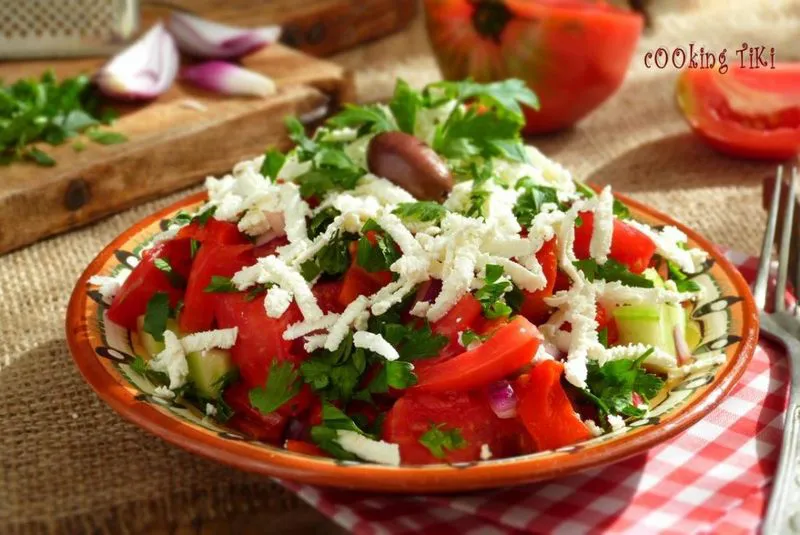
The Shopska salad is a traditional Bulgarian summer salad that has become popular all over the country and beyond. This refreshing dish is perfect for hot summer days, and its colourful ingredients make it a feast for the eyes as well as the taste buds. In this section, we will discuss the history of Shopska salad, its different variations, and how to make it at home.
History of Shopska Salad
The Shopska salad is named after the Shopi people who live in the Sofia region of Bulgaria. The original version of this salad was made with green peppers instead of sweet roasted peppers and topped with sirene cheese instead of feta cheese. However, over time, different variations emerged, including the salad version that uses sweet roasted peppers and feta cheese.
Variations of Shopska Salad
Apart from the classic version of Shopska salad, there are other variations that you can try. One such variation is Snezhanka which includes yogurt and garlic dressing instead of feta cheese. This variation originated in the Rhodope Mountains region of Bulgaria where dairy products like yogurt are widely used in cooking.
How to Make Shopska Salad
Making a delicious Shopska salad is easy and requires only a few ingredients. Here’s what you need:
2 medium-sized cucumbers3 medium-sized tomatoes1 medium-sized onion1 sweet roasted pepper (or green pepper if preferred)
Sirene cheese (or Feta if preferred)
Parsley
2 medium-sized cucumbers
3 medium-sized tomatoes
1 medium-sized onion
Parsley
To prepare the salad:
Wash all vegetables thoroughly. Dice cucumbers, tomatoes, onions into small pieces. Cut sweet roasted pepper into small pieces. Mix all diced vegetables together in a bowl. Top with crumbled feta cheese or sirene cheese. Garnish with parsley.
Wash all vegetables thoroughly.
Dice cucumbers, tomatoes, onions into small pieces.
Cut sweet roasted pepper into small pieces.
Mix all diced vegetables together in a bowl.
Top with crumbled sirene cheese or feta cheese.
Garnish with parsley.
Serve chilled.
Lyutenitsa: Childhood Favourite Spread
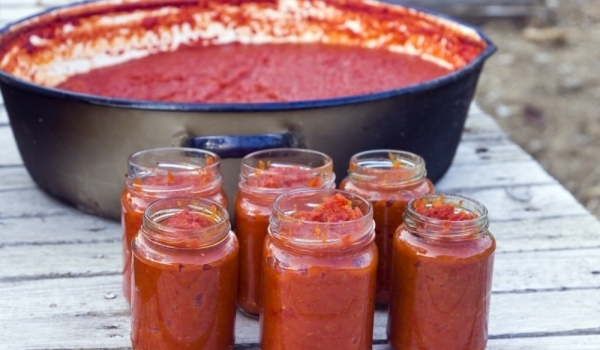
Roasted red peppers, tomatoes, and eggplants are the main ingredients of a traditional Bulgarian spread called lyutenitsa. This versatile condiment is a childhood favourite in Bulgaria and is often eaten with bread or added to dishes for extra flavour. In this blog post, we will explore the many variations of lyutenitsa and how it can be used as a dip, sauce, or marinade for meats and vegetables.
Versatile Condiment
Lyutenitsa is a staple in Bulgarian cuisine and can be found at local markets during late summer or early fall when the vegetables are in season. The spread is typically made by roasting the vegetables until they are soft and then blending them together with salt, sugar, vinegar, and oil. Some recipes include onions, garlic, and hot peppers for an added kick of flavour.
One of the great things about lyutenitsa is its versatility. It can be used as a dip for bread or crackers, as a sauce for pasta or grilled meats, or even as a marinade for vegetables before grilling or roasting. Its sweet and tangy flavour pairs well with many different types of food.
Variations
There are many variations of lyutenitsa depending on personal taste preferences. Some people prefer their lyutenitsa to be sweeter while others like it spicier. Some recipes call for more tomatoes than peppers while others use equal amounts of both.
One popular variation is called “ljuta lyutenitsa” which translates to “spicy lyutenitsa”. This version includes hot peppers such as chili or paprika to give it an extra kick of heat. Another variation is “zelenchukova lyutenitsa” which includes additional vegetables such as carrots and celery.
Homemade Gifts
In Bulgaria, it’s common to make homemade jars of lyutenitsa during the late summer and early fall when the vegetables are in season. These jars are often given as gifts to friends and family during the holiday season. Making lyutenitsa is a labour-intensive process that requires roasting, peeling, and blending the vegetables together. However, the end result is a delicious and versatile condiment that can be enjoyed throughout the year.
Sarmi: Stuffed Vine or Cabbage Leaves
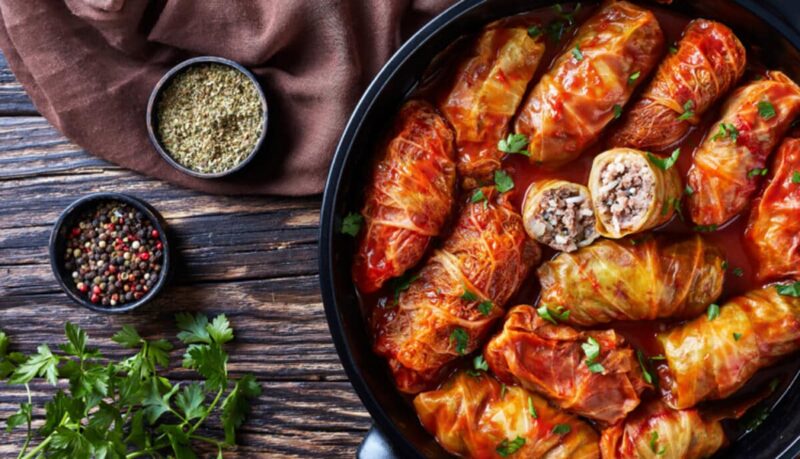
Sarmi is a traditional Bulgarian dish that has been enjoyed for generations. This delicious and hearty dish is made by stuffing either cabbage leaves or vine leaves with a mixture of rice, minced meat, and spices. The filling can also include vegetables such as eggplant and sausage, or sausages themselves. Garlic, spices, and herbs such as parsley and dill are commonly used to flavour the filling mixture. Sarmi can be served on their own as a main dish or as a side dish to kavarma, a traditional Bulgarian stew. Sirene, a type of Bulgarian feta cheese, is often crumbled on top of sarmi for added flavour.
Cabbage Leaves vs Vine Leaves
One of the key differences between different types of sarmi is whether they use cabbage leaves or vine leaves. Cabbage sarmi are typically larger than vine leaf sarmi because cabbage leaves are bigger than vine leaves. The texture of the two types of leaves also differs slightly – cabbage leaves are thicker and chewier than vine leaves, which are more delicate.
Lozovi Sarmi
Lozovi sarmi refers specifically to the version of sarmi that uses vine leaves instead of cabbage leaves. These are often smaller in size than cabbage leaf sarmi due to the size limitations imposed by the smaller vine leaves.
Filling Variations
While rice and minced meat are staples in most versions of sarmi filling, there is plenty of room for variation depending on personal preferences and regional traditions. Some recipes call for adding vegetables like eggplant to the filling mixture while others incorporate sausages themselves into the mix.
Flavouring with Garlic & Herbs
Garlic is an essential ingredient in most variations of sarmi filling due to its strong flavour profile that complements the other ingredients well. Spices like paprika, cumin, and black pepper are also commonly used to add depth of flavour. Herbs such as parsley and dill are often added to the filling mixture as well for an extra burst of freshness.
Serving Suggestions
Sarmi can be served on their own as a main dish or as a side dish to kavarma, a traditional Bulgarian stew. Sirene, a type of Bulgarian feta cheese, is often crumbled on top of sarmi for added flavour. Some people also enjoy eating sarmi with yogurt or sour cream.
Bob Chorba: Bulgarian Bean Soup
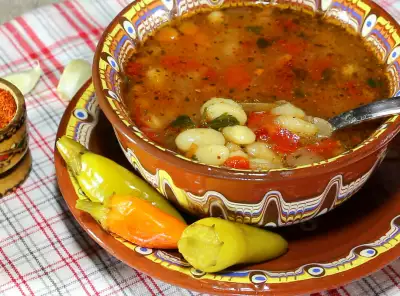
Bob Chorba: A Hearty and Nutritious Bulgarian Bean Soup
Originating from Bulgaria, bob chorba is a traditional bean soup that has been enjoyed for generations. This delicious and hearty soup is made with white beans, onions, carrots, peppers, tomatoes, and spices such as paprika and cumin. The soup can be served as a starter or main course and is often accompanied by a dollop of yogurt and a slice of bread.
Nutritious Benefits of Bob Chorba
Bob chorba is not only tasty but also nutritious. Beans are an excellent source of protein, fibre, iron, potassium, foliate, and other essential vitamins and minerals. They are also low in fat and calories which make them an ideal ingredient for those who want to maintain their weight or lose some pounds.
In addition to the health benefits of beans themselves, the vegetables used in bob chorba provide additional nutritional value. Carrots contain beta-carotene which helps keep our eyes healthy while peppers are rich in vitamin C which boosts our immune system. Tomatoes contain lycopene which has antioxidant properties that help protect against cancer.
Variations of Bob Chorba
While the basic ingredients remain the same across different regions in Bulgaria, there are variations of bob chorba that include meat or sausage. For example:
Bob chorba s meso (with meat) – this variation includes beef or pork Kavarma-style bob chorba – this version includes sautéed onions before adding the rest of the ingredients
Vegetarian bob chorba – this variation excludes meat but adds more vegetables such as celery
Bob chorba s meso (with meat) – this variation includes beef or pork
Kavarma-style bob chorba – this version includes sautéed onions before adding the rest of the ingredients
Vegetarian bob chorba – this variation excludes meat but adds more vegetables such as celery
No matter what variation you choose to make or try when visiting Veliko Tarnovo, you will not be disappointed with its savoury taste.
How to Make Bob Chorba at Home
Making bob chorba at home is relatively easy once you have all the necessary ingredients on hand. Here’s how to make a basic version of bob chorba:
Ingredients:
1 cup dried white beans1 onion, chopped2 carrots, peeled and chopped1 red pepper, chopped2 tomatoes, chopped2 tbsp oil1 tsp paprika1 tsp cumin salt and pepper to taste
1 cup dried white beans
1 onion, chopped
2 carrots, peeled and chopped
1 red pepper, chopped
2 tomatoes, chopped
2 tbsp oil
1 tsp paprika
1 tsp cumin
Salt and pepper to taste
Instructions:
Soak the beans overnight in water. Drain the water and rinse the beans. In a pot or Dutch oven, heat up the oil over medium heat. Add onions and sauté until soft. Add carrots and peppers and cook for another few minutes. Add tomatoes, paprika, cumin, salt, and pepper to taste. Pour in enough water to cover all ingredients by an inch or two. Bring everything to a boil then reduce heat to low-medium heat. Cover with lid slightly tilted open so that steam can escape but not all liquid evaporates away at once. Cook for about an hour or until the beans are tender.
Soak the beans overnight in water.
Drain the water and rinse the beans.
In a pot or Dutch oven, heat up the oil over medium heat.
Add onions and sauté until soft.
Add carrots and peppers and cook for another few minutes.
Add tomatoes, paprika, cumin, salt, and pepper to taste.
Pour in enough water to cover all ingredients by an inch or two.
Bring everything to a boil then reduce heat to low-medium heat.
Cover with lid slightly tilted open so that steam can escape but not all liquid evaporates away at once.
Cook for about an hour or until the beans are tender.
Serve hot with a dollop of yogurt on top and bread on the side.
Madradjisko and Mishmash: Egg and Cheese Dishes
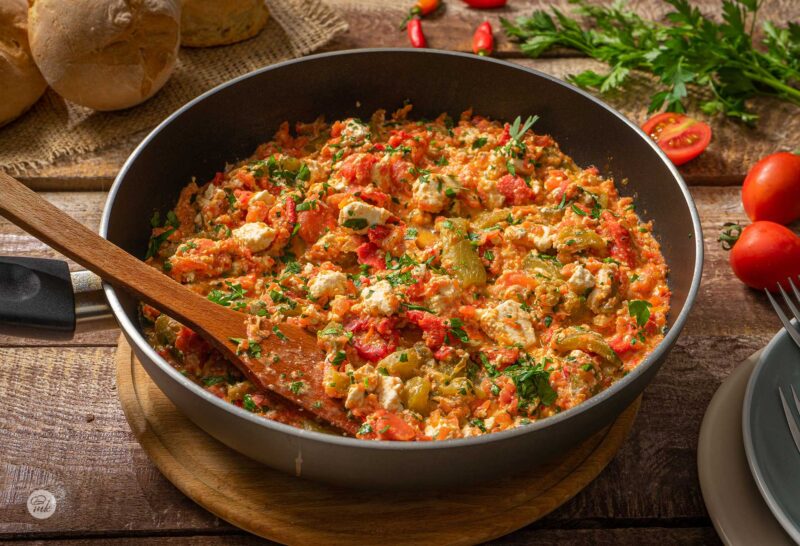
Madradjisko and Mishmash are two popular egg and cheese dishes in Bulgarian cuisine. They are both quick, easy to make, and perfect for breakfast or as a snack during the day. Madradjisko is made with eggs, kashkaval cheese, mushrooms, and sometimes brined cheese. On the other hand, Mishmash includes green cheese, feta cheese, roasted eggplant, and other ingredients.
The combination of eggs and cheese is a classic one that has been used in many cultures around the world. In Bulgaria, this combination is taken to another level with the addition of mushrooms or brined cheese in Madradjisko or green cheese and roasted eggplant in Mishmush. The result is a delicious dish that can be enjoyed any time of the day.
Moussaka is another popular egg and cheese dish in Bulgaria that requires some cooking time but is definitely worth it. It consists of layers of potatoes, eggplant, minced meat (usually chicken), and white cheese. This hearty meal is perfect for lunch or dinner.
There are many dishes that include eggs and cheese as their main ingredients. Meshana Skara is one such example where grilled meats are served with kashkaval cheese on top. This dish can be found at traditional Bulgarian food restaurants all over the country.
Tarator: Bulgarian Summer Refresher
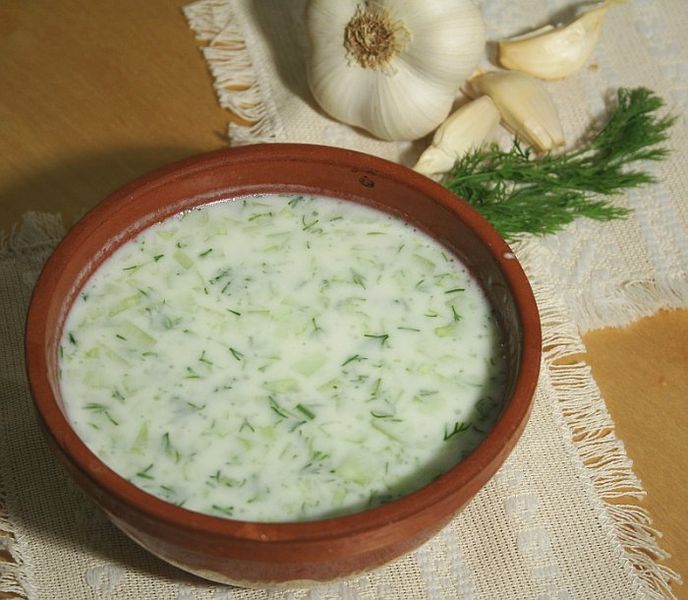
Cool, refreshing, and perfect for hot summer days, tarator is a traditional Bulgarian cold soup that has been enjoyed for generations. Made with yogurt, cucumbers, garlic, dill, and walnuts, this dish is a staple of the Bulgarian food summer season. In this post, we will explore the history of tarator and its many variations throughout Bulgaria.
A Brief History of Tarator
Tarator has been a beloved dish in Bulgaria for centuries. It is believed to have originated in the Middle East and was brought to Bulgaria during the Ottoman Empire. The dish quickly became popular due to its refreshing taste and cooling properties during the hot summer months.
This soup has an interesting history behind it. According to legend, tarator was invented by Thracian warriors who used to carry all the ingredients separately during their long journeys. They would mix them together when they reached their destination to make a refreshing meal that would energize them for battle.
Today, tarator can be found all over Bulgaria and is often served as a starter or side dish during meals. It is also a popular dish during the Bulgarian New Year celebrations.
Variations of Tarator
While the basic ingredients of tarator remain consistent throughout Bulgaria – yogurt, cucumbers, garlic, dill, and walnuts – each region has its own unique version of this beloved summer refresher.
One variation includes adding turshia (pickled vegetables) to give it an extra tangy flavour. Another version uses different types of nuts such as almonds or hazelnuts instead of walnuts. Some regions even add boiled eggs or potatoes to make it more filling.
No matter what version you try though, one thing remains constant – tarator is always cool and refreshing on a hot summer day.
Where to Try Tarator
If you’re planning a trip to Veliko Tarnovo during the summer season, be sure to try some local tarator! Many restaurants offer this traditional cold soup on their menus during the warmer months.
For those looking for an immersive experience into Bulgarian cuisine and culture, there are several tours available that focus specifically on food. These tours allow visitors to sample various dishes including tarator while learning about their history and significance in Bulgarian food culture.
Patatnik and Selski Kartofi: Potato Dishes
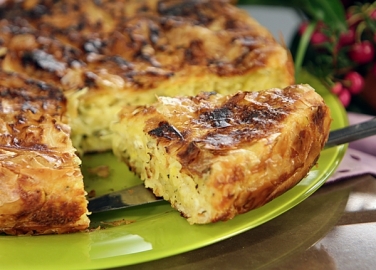
Potatoes are a staple food in Bulgaria, and there are many different types of potato dishes that are unique to the country. In this section, we will be discussing two popular Bulgarian potato dishes: Patatnik and Selski Kartofi.
Patatnik – The National Dish of Bulgaria
Patatnik is a traditional Bulgarian dish that is considered the national dish of the country. It is made with grated potatoes, onions, various spices, and sometimes tomatoes. The mixture is then baked in a clay pot until it becomes crispy on the outside and soft on the inside.
The recipe for Patatnik varies from region to region in Bulgaria, but it is always served as a side dish. Some people like to add cheese or yogurt on top of their Patatnik before serving it at the table.
One interesting fact about Patatnik is that it was traditionally cooked by shepherds who would use hot coals from their campfire to bake the dish in a clay pot. Today, you can find Patatnik being served in restaurants all over Bulgaria.
Selski Kartofi – A Popular Potato Dish
Selski Kartofi, also known as “village potatoes,” is another popular potato dish in Bulgaria. It typically includes ingredients such as parlenka (a type of bread), milinki (a type of cheese), and dill.
The potatoes used in Selski Kartofi are usually cut into small pieces and fried until they become crispy on the outside. They are then mixed with the other ingredients before being baked in a clay pot until they are fully cooked.
Selski Kartofi is often served with fried sprats or French fries as part of a larger meal. It’s an excellent choice for anyone looking for a hearty, filling meal that’s full of flavour.
Banitsa: A Baked Extravaganza
A National Obsession: Banitsa

Banitsa is a traditional Bulgarian flatbread that has been around for centuries. It is a staple food in Bulgaria and is enjoyed by many locals and tourists alike. This baked extravaganza is typically served as a snack or breakfast food, but it can also be enjoyed at any time of the day. The filling options are endless, from lukanka to printsesa to walnuts, making it a versatile dish that can cater to anyone’s taste buds.
Christmas Eve Delight
In Bulgaria, banitsa is often enjoyed on Christmas Eve as part of the traditional dinner feast. It symbolizes prosperity and good luck for the coming year. Families gather together to share this special moment while enjoying the delicious taste of freshly baked banitsa. It’s not just about the food; it’s about the tradition and culture that comes with it.
Mekitsi: A Sweet Alternative

For those who prefer a sweeter taste, mekitsi (also known as mekitzi) are an excellent alternative to banitsa. These fried dough balls are typically served with white cheese and honey or jam on top. They are perfect for breakfast or as a dessert after dinner.
The Best Quality and Taste
If you’re looking to try banitsa for the first time, your best bet is to head to a local bakery where you can find the best quality and taste. These places specialize in making traditional Bulgarian foods like banitsa, so you know you’re getting an authentic experience.
Making Banitsa at Home
If you want to try making banitsa at home, there are plenty of recipes available online that cater to all skill levels. However, nothing beats learning from someone who has been making it their whole life. Ask around in your local Bulgarian food community if anyone would be willing to teach you how to make this delicious dish.
Soups and Stews in Bulgarian Cuisine
Bulgarian cuisine is a treasure trove of flavours, textures, and aromas. One of the most prominent features of this cuisine is its hearty soups and stews that are often enjoyed as a main course. These dishes are not only delicious but also highly nutritious and filling. In this section, we will explore some of the most popular soups and stews in Bulgarian cuisine.
Skembe Chorba – The Hangover Cure
Shkembe chorba is one of the most famous soups in Bulgaria, especially among those who like to party hard at night! This soup is made with tripe (cow’s stomach) and seasoned with garlic, vinegar, paprika, and sometimes chili peppers. It has a strong aroma that can be off-putting for some people but once you get past it, you’ll find that shkembe chorba is quite delicious.
The soup has a unique taste and texture that can be difficult to describe to those who have never tasted it before. In this section, we will explore what makes Shkembe Chorba so special and why it remains an essential part of Bulgarian food.
This soup is believed to be an effective hangover cure due to its high protein content which helps replenish lost nutrients in the body after heavy drinking. Shkembe chorba is usually served hot with a few slices of bread.
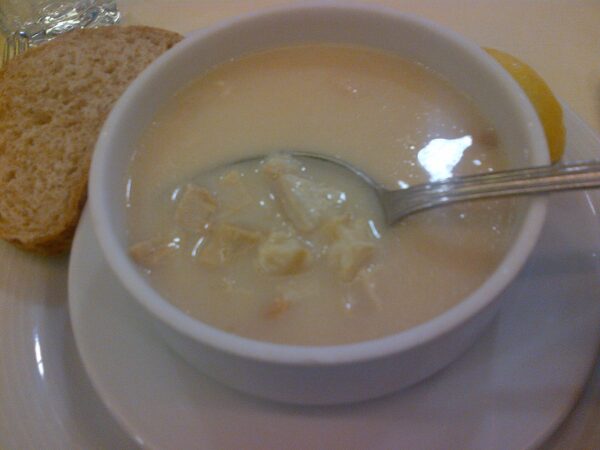
A Traditional Dish
Shkembe Chorba has been a part of Bulgarian cuisine for centuries. It is traditionally served hot with fresh bread on the side. The dish is often enjoyed alongside other Bulgarian favourites like grilled meats (skara) and fresh salads.
Where to Find Shkembe Chorba
If you’re interested in trying Shkembe Chorba for yourself, you can find it in many Bulgarian restaurants and cafes. Some establishments even specialize in the dish and offer variations that include different types of meat or additional seasonings.
Ribena Chorba – The Fish Soup from the Black Sea Region
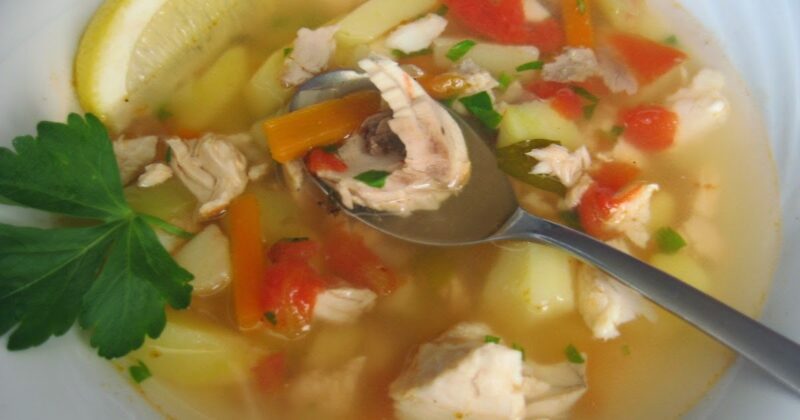
The Black Sea region of Bulgaria is known for its fish soups, and ribena chorba is one of the most popular ones. This soup is made with carp, vegetables (such as onions, carrots, and celery), and seasoned with paprika, parsley, and black pepper. It has a rich flavour that comes from the fish broth which is made by boiling the fish bones.
Ribena chorba is usually served hot with a slice of lemon on top. This soup is not only delicious but also highly nutritious as it contains omega-3 fatty acids that are good for your heart health.
Breads and Pastries in Bulgarian Cuisine
Bakeries: A Common Sight in Bulgaria
Bakeries are a common sight in Bulgaria, offering a variety of freshly baked breads and pastries. The aroma of freshly baked goods fills the air as you walk by, making it hard to resist stopping in for a treat. Bulgarian bakeries offer an array of options, from sweet to savoury, and everything in between.
One popular pastry found in Bulgarian bakeries is banitsa. Banitsa is made with filo pastry and filled with cheese or spinach. It’s often served as breakfast or as a snack throughout the day. Another popular option is kozunak, which is a sweet bread typically eaten during Easter. Kozunak is made with dough that’s enriched with sugar, eggs, and butter, giving it its sweet flavour.
Filo Pastry: A Staple Ingredient
Filo pastry, also known as phyllo dough, is a staple ingredient in Bulgarian food. It’s used to make dishes such as banitsa but can also be used to make desserts like baklava. Filo pastry is thin and delicate and requires skill to work with properly.
Making filo pastry from scratch can be time-consuming and challenging; therefore, many people opt to buy pre-made filo pastry from the store instead. Pre-made filo pastry can be found at most grocery stores in Bulgaria.
Dough Made from Fermented Wheat: Unique Flavour and Texture
Dough made from fermented wheat is commonly used in Bulgarian breads and pastries, giving them their unique flavour and texture. Fermented wheat dough has been used for centuries in Bulgaria due to its ability to produce light and airy bread.
One example of bread made using fermented wheat dough is pitka – a traditional round loaf often served at special occasions such as weddings or holidays. Pitka has a slightly sour taste due to the fermentation process but pairs well with savoury dishes like stews and soups.
Bulgarian Yogurt: A Staple in Bulgarian food and diet
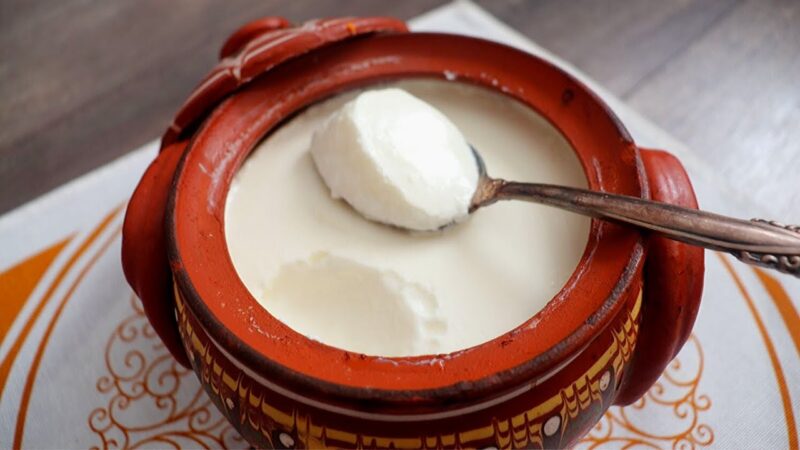
Thick, creamy, and delicious – Bulgarian yogurt is a dairy product that has been an integral part of Bulgarian cuisine for centuries. This yogurt is made using lactobacillus bulgaricus, a bacteria strain unique to Bulgaria that gives the yogurt its distinct taste and texture. In this section, we will discuss the significance of Bulgarian yogurt in the country’s diet.
A Traditional Delight
Bulgarian yogurt is not just any ordinary dairy product; it is a cultural heritage that has been passed down from generation to generation. The process of making this yogurt involves fermenting milk with lactobacillus bulgaricus and streptococcus thermophilus bacteria strains. The result is a tangy flavour with a slightly sour taste and thick consistency that makes it perfect for dips and spreads like Greek tzatziki.
In addition to being used as a dip or spread, Bulgarian yogurt is also commonly used in traditional dishes like banitsa and tarator. Banitsa is a pastry filled with Bulgarian white cheese and yogurt while tarator is a cold soup made with cucumbers, dill, garlic, and yogurt. These dishes are not only delicious but also showcase the versatility of Bulgarian yogurt in cooking.
Health Benefits
Apart from its delectable taste, Bulgarian yogurt also boasts numerous health benefits due to its high protein content and probiotics that aid digestion. Probiotics are live microorganisms that provide various health benefits when consumed in adequate amounts. They help improve gut health by restoring the natural balance of bacteria in the digestive system.
One study conducted on 20 healthy adults found that consuming 200g of fermented milk containing lactobacillus bulgaricus for four weeks improved their gut microbiota composition significantly compared to those who did not consume it (1). Another study showed that consuming probiotic-rich foods like yogurts can reduce inflammation levels in the body, which can lead to several chronic diseases (2).
Pairing with Bulgarian White Cheese
Bulgarian white cheese is a type of cheese similar to feta and is often paired with Bulgarian yogurt in dishes and salads. The combination of these two dairy products creates a unique flavour that complements each other perfectly. This pairing is also commonly used in traditional dishes like Shopska salad, which consists of chopped tomatoes, cucumbers, onions, peppers, and parsley topped with grated Bulgarian white cheese and yogurt.
King of the Grill: Kebapche

Bulgarian food is known for its hearty and flavourful meat dishes, and one of the most popular among them is kebapche. This grilled meat dish made from minced beef and spices is a staple in Bulgarian restaurants both in the country and abroad. In this section, we will discuss everything you need to know about kebapche, from its ingredients to its preparation methods.
Ingredients
Kebapche is typically made from minced beef mixed with spices such as cumin, salt, and black pepper. The mixture is then shaped into long cylindrical sausages that are grilled over an open flame until they are crispy on the outside and juicy on the inside. Black pepper is a key ingredient in many Bulgarian meat dishes, including kebapche, adding a spicy kick to the savoury flavour.
Preparation Methods
Kebapcheta, smaller versions of kebapche, are also commonly found in Bulgarian food. They are often served with a side of fresh vegetables such as tomatoes and peppers and pair well with a cold beer. Cheverme, a traditional Bulgarian method of slow-roasting meat on a spit over an open fire, is another popular way to prepare grilled meat in the country.
At many Bulgarian restaurants, you can find kebapche on the menu alongside other traditional dishes such as banitsa (a pastry filled with cheese or spinach) or shopska salad (a salad made with cucumbers, tomatoes, onions, peppers, and feta cheese).
Traditional Bulgarian Food Recipes and Dishes to Try
Savouring the taste of traditional Bulgarian food is like taking a trip back in time. The rich flavours and aromas of these dishes are a testament to Bulgaria’s diverse cultural influences, from the Mediterranean to Eastern Europe. In this section, we will explore some of the best Bulgarian foods that you must try.
Kavarma: A Hearty Stew That Will Warm Your Soul
Kavarma is a traditional Bulgarian stew made with meat (usually pork or chicken), vegetables (such as peppers, onions, and tomatoes), and spices (like paprika). The dish is slow-cooked over low heat to allow all the flavours to meld together perfectly. Kavarma can be served hot with rice or potatoes or cold as part of a salad.
Moussaka: A Comforting Casserole That Will Fill You Up
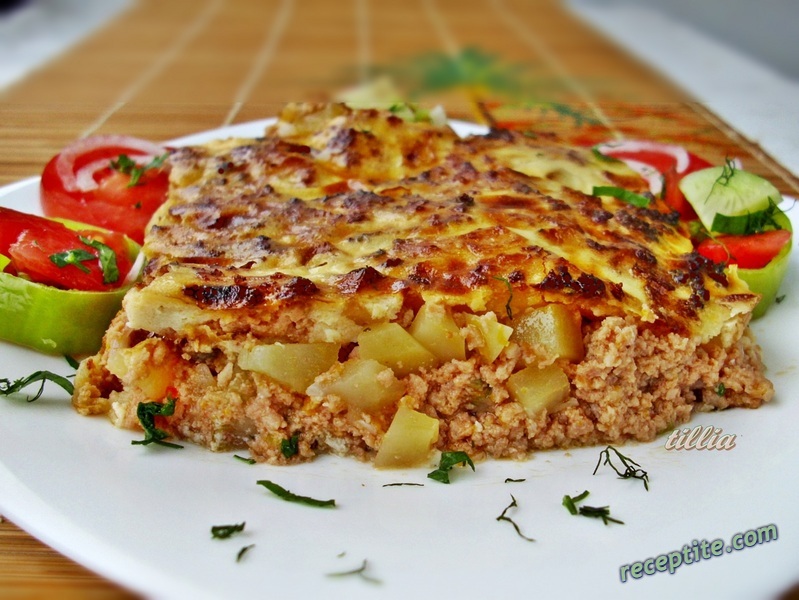
Moussaka is a hearty casserole that is popular in many Balkan countries, including Bulgaria. It’s made with layers of potatoes, minced meat (usually beef or pork), and vegetables like eggplant or zucchini. The dish is then topped with a creamy béchamel sauce and baked until golden brown.
Stuffed Vegetables in Bulgarian Food Cuisine
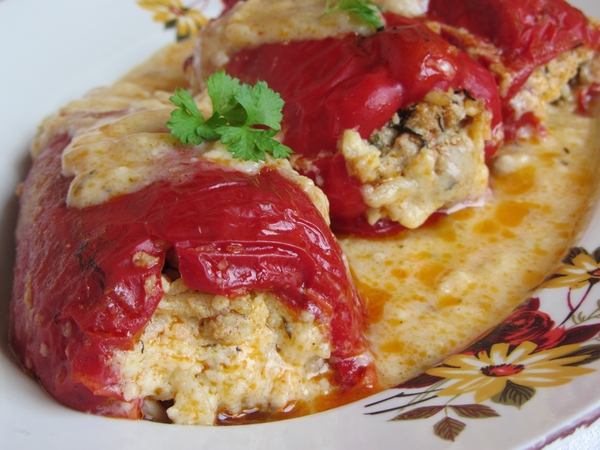
Green beans, carrots, red peppers, and peppers are some of the most popular vegetables used for stuffing in Bulgarian food. This dish is a staple in Bulgarian households and is enjoyed as a main or side dish. The stuffing mixture typically consists of rice, ground meat, and herbs. Here’s everything you need to know about stuffed vegetables in Bulgarian cuisine.
The History of Stuffed Vegetables in Bulgaria food
Stuffed vegetables have been a part of Bulgarian cuisine for centuries. The dish was originally created as a way to use up leftover ingredients, particularly during the summer months when fresh vegetables were abundant. Over time, the recipe evolved into what it is today – a delicious and hearty meal that can be enjoyed year-round.
Ingredients Used in Stuffed Vegetables
The ingredients used in stuffed vegetables vary depending on the recipe and personal preference. However, there are some common ingredients that are used across most recipes. The stuffing mixture usually contains rice, ground meat (usually pork or beef), onions, garlic, parsley, dill and salt & pepper to taste.
Preparing Stuffed Vegetables
To prepare stuffed vegetables, first choose your preferred vegetable(s). Cut off the tops of the vegetable(s) and remove any seeds or membranes inside. Next, prepare the stuffing mixture by mixing together cooked rice with ground meat (cooked or raw), onions, garlic and herbs until well combined.
Stuff each vegetable with the mixture until full but not overflowing then place them upright into a pot filled with water or broth. Cover with lid then cook over medium heat until tender which takes approximately 45 minutes to an hour depending on size of veggies.
Serving Suggestions
Stuffed vegetables can be served hot or cold depending on personal preference. They can be served as a main dish accompanied by salad or other side dishes such as potatoes or bread rolls; they also make great appetizers at parties!
Traditional Bulgarian Drinks
Boza: The Bulgarian Version of Vinegar-Based Drink
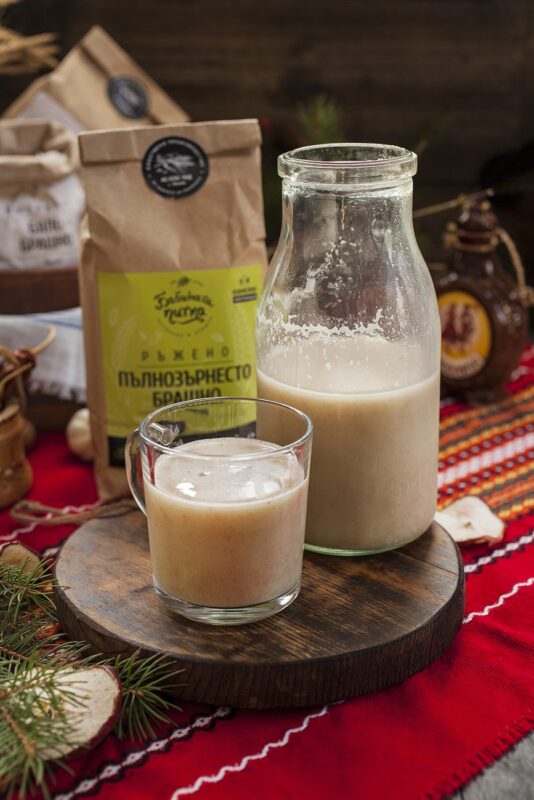
Bulgarians have their own version of vinegar-based drink called “Boza,” which is a popular non-alcoholic drink in the country. Boza is made from fermented wheat or corn and has a sweet, sour, and slightly acidic taste. It is usually served cold and consumed as a refreshing beverage during hot summer days.
Boza has been around for centuries and has become an integral part of Bulgarian culture. It is believed to have originated from the Middle East and was introduced to Bulgaria during the Ottoman Empire’s reign. Bulgarians have been drinking Boza for so long that it has become a symbol of national identity.
Red Wine: A Common Drink in Bulgaria

Red wine is a common drink in Bulgaria, and it is believed to be a good hangover cure due to its high tannin content. Tannins are natural compounds found in grape skins, seeds, and stems that give red wine its characteristic dryness and bitterness. They also act as antioxidants that help reduce inflammation and protect against heart disease.
Bulgaria has a long history of winemaking dating back to ancient times. The country’s mild climate, fertile soil, and diverse grape varieties make it an ideal place for growing grapes. Some of the most popular Bulgarian wines include Mavrud, Melnik, Gamza, Pamid, Dimyat, Rubin, Merlot, Cabernet Sauvignon.
Cold Beer: A Popular Drink in Bulgaria

Cold beer is also a popular drink in Bulgaria, especially during hot summer days. Bulgarians love their beer so much that they even have their own beer festival called Kamenitza Live held every year in Plovdiv city.
Bulgarian beers are known for their crispness and refreshing taste. Some of the most popular Bulgarian beers include Zagorka, Kamenitza 1881, Ariana Radler Lemon & Mint, Astika, and Shumensko.
Turshiya: A Unique Hangover Cure

Bulgarians have a unique hangover cure called “Turshiya,” which is a pickled vegetable dish that is believed to help alleviate hangover symptoms. Turshiya is made by pickling vegetables such as cucumbers, peppers, carrots, cabbage, and tomatoes in vinegar and saltwater.
Pickled vegetables are rich in electrolytes such as sodium and potassium that help replenish the body’s fluids lost during drinking. They also contain acetic acid, which helps break down alcohol in the liver and reduce inflammation caused by alcohol consumption.
A bonus hangover cure:
Juice from sour cabbage is another traditional Bulgarian cure. Sour cabbage is fermented by various lactic acid bacteria. It has a long shelf life and a distinctive sour flavor. It’s used for many dishes, from a simple salad made of chopped cabbage and sprinkled with paprika, to cabbage rolls – sarmi. The juice is popular in Bulgaria as a morning drink after a hard party night.
Fried Pork and Elena Pork Leg
Fried Pork: A Delicious and Easy-to-Make Bulgarian Dish
If you’re looking for a quick and easy way to satisfy your cravings for pork, then Fried Pork is the perfect dish for you. Made from sliced pork meat that is fried in oil until crispy and golden brown, this dish is a staple in Bulgarian food. The best part? It’s incredibly simple to make.
To prepare Fried Pork, start by slicing the pork meat into thin slices. Season the slices with salt and pepper before coating them in fini kori (fine breadcrumbs). Then, heat up some oil in a frying pan over medium-high heat. Once the oil is hot enough, add the coated pork slices to the pan and fry them until they are crispy and golden brown.
The result? A deliciously crunchy exterior that gives way to juicy and tender pork meat on the inside. Serve it with a side of rice or potatoes for a complete meal that will leave you feeling satisfied.
Elena Pork Leg: A Traditional Bulgarian Dish That Will Leave You Craving More
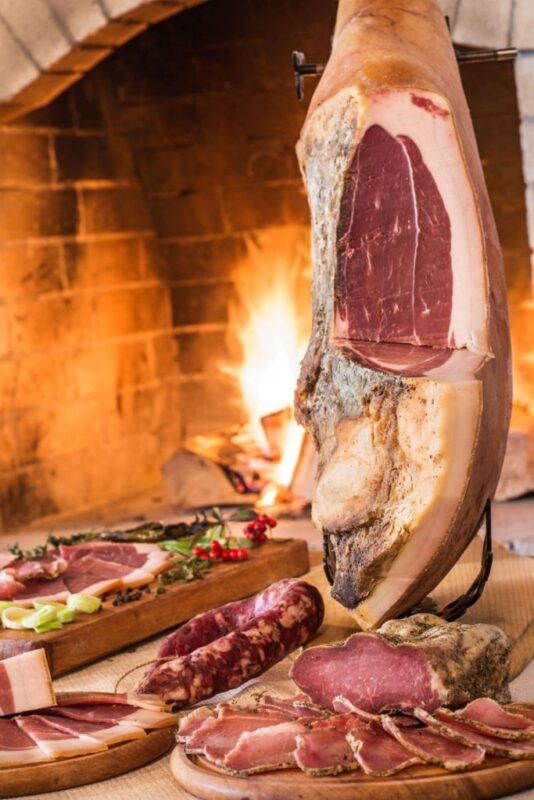
Elenski But (Elena Pork Leg) is another popular dish in Bulgarian cuisine that features slow-cooked pork leg served with rice, traditional salami, and kiselo mlyako (Bulgarian yogurt). This dish takes a bit more time to prepare than Fried Pork but trust us when we say it’s worth it.
To prepare Elenski But, start by seasoning a large piece of pork leg with salt and pepper. Then, place it in a pot along with some rice, traditional salami, and water. Cover the pot with a lid and let everything simmer together on low heat for several hours until the pork leg is tender enough to fall off the bone.
Once everything is cooked through, serve the Elena Pork Leg as one large slice of tender pork leg topped with a dollop of kiselo mlyako on top. The combination of flavours from the salty salami, creamy yogurt, and tender pork is simply irresistible.
Meatballs in Bulgarian Cuisine
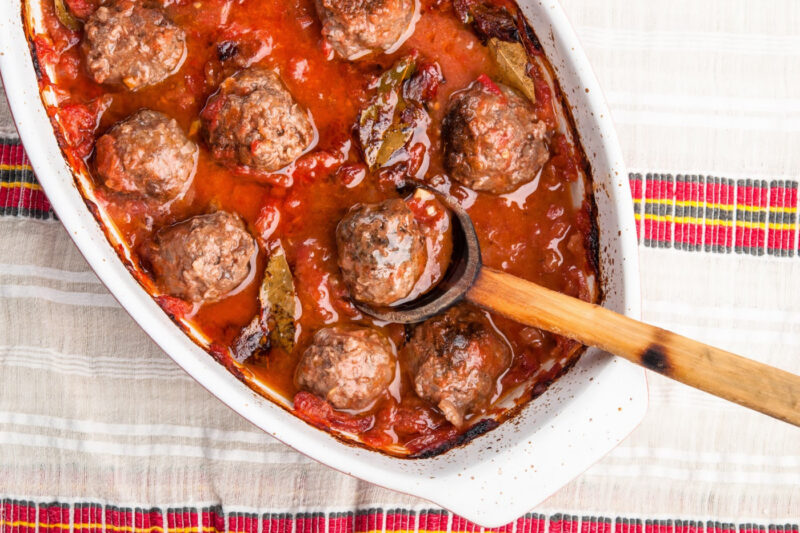
The Bulgarian cuisine is a blend of different flavours that have been influenced by various cultures over the years. One dish that stands out is meatballs, which are a staple in Bulgarian food. Meatballs are made with minced meat, breadcrumbs, eggs, and spices such as cumin and paprika. They can be served as an appetizer or main course and are often paired with mashed potatoes or rice. In this section, we will discuss the different variations of meatballs in Bulgarian food.
Classic Meatballs
Classic meatballs are made with minced beef or pork mixed with breadcrumbs, eggs, salt, pepper, cumin, and paprika. The mixture is then shaped into small balls and fried until golden brown. Classic meatballs are usually served with mashed potatoes or rice and a side salad.
Cheese Stuffed Meatballs
Cheese stuffed meatballs are a popular variation of classic meatballs in Bulgaria. These delicious treats have grated cheese added to the mixture before shaping them into balls. Once cooked, the melted cheese inside adds extra flavour to the dish.
Onion Meatballs
Onion meatballs are another variation of classic meatballs that include chopped onions added to the mixture before shaping them into balls. The onions add an extra layer of flavour to the dish and make it more aromatic.
Spicy Meatballs
For those who love spicy food, spicy meatballs are an excellent option. These fiery delights have chili peppers added to the mixture before shaping them into balls. Spicy meatballs can be served with mashed potatoes or rice for a satisfying meal.
Meatball Soup
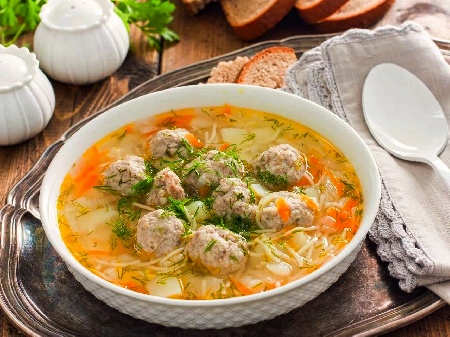
Meatball soup is another popular way to enjoy this dish in Bulgaria. The soup includes classic meatballs cooked in chicken broth along with vegetables such as carrots and celery for added nutrition and flavour.
Final Thoughts on Bulgarian Food
From the refreshing Tarator to the hearty Bob Chorba, Bulgarian food offers a delightful array of dishes that are sure to satisfy any palate. The traditional recipes and unique ingredients used in Bulgarian cooking make it stand out among other European cuisines.
One cannot talk about Bulgarian food without mentioning Banitsa, a baked extravaganza that is loved by all Bulgarians. The layers of filo pastry filled with cheese and eggs make for a delicious breakfast or snack. And let’s not forget about Kebapche, the king of the grill in Bulgaria. This grilled meat dish is made with minced pork or beef and spices, making it a popular street food in Bulgaria.
Bulgarian Yogurt is another staple in Bulgarian diet that has gained worldwide recognition for its health benefits. It is used as an ingredient in many dishes such as Shopska Salad, which is a summer salad made with fresh vegetables and feta cheese.
The use of stuffed vegetables such as vine leaves and cabbage leaves in Sarmi showcases the creativity of Bulgarian food. These stuffed vegetables are often served during special occasions and holidays.
Bulgarian food also offers an impressive selection of soups and stews such as Shkembe Chorba, a unique soup made from tripe that may not be for everyone but worth trying at least once.

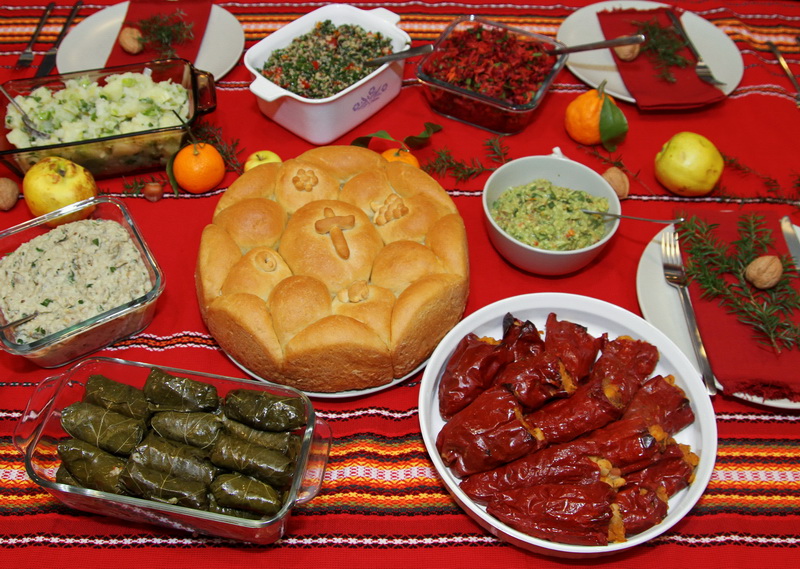
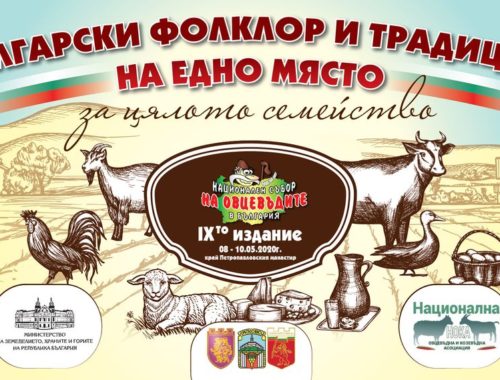

No Comments